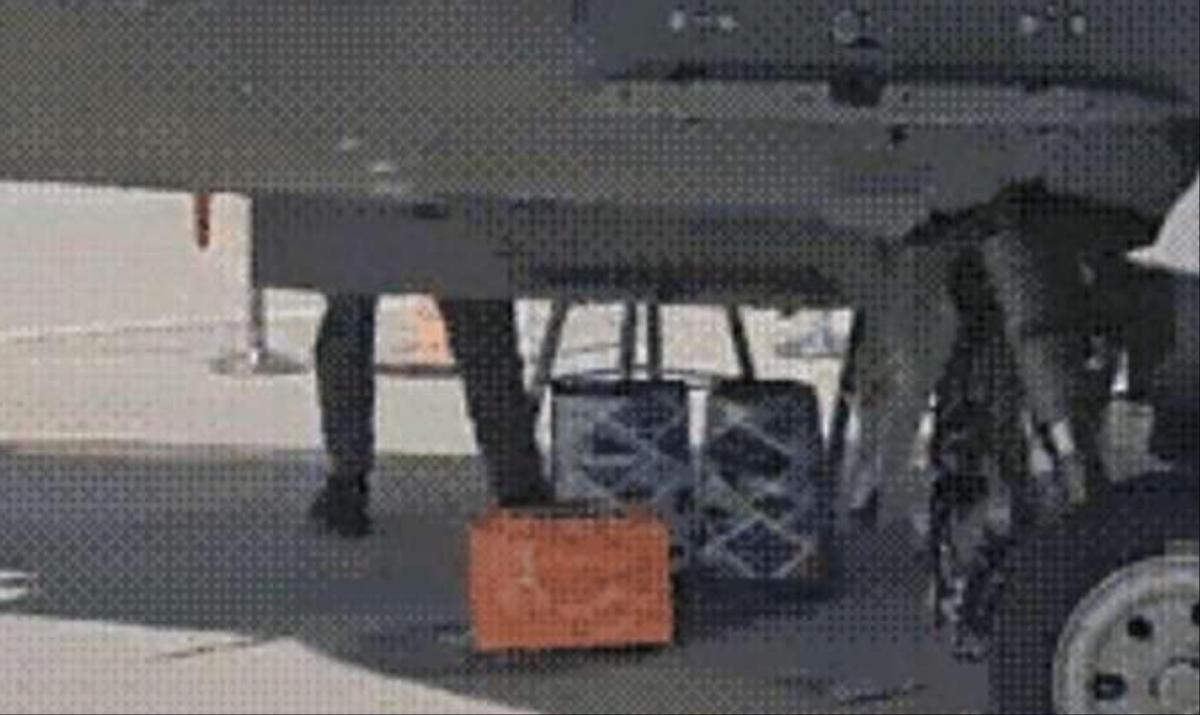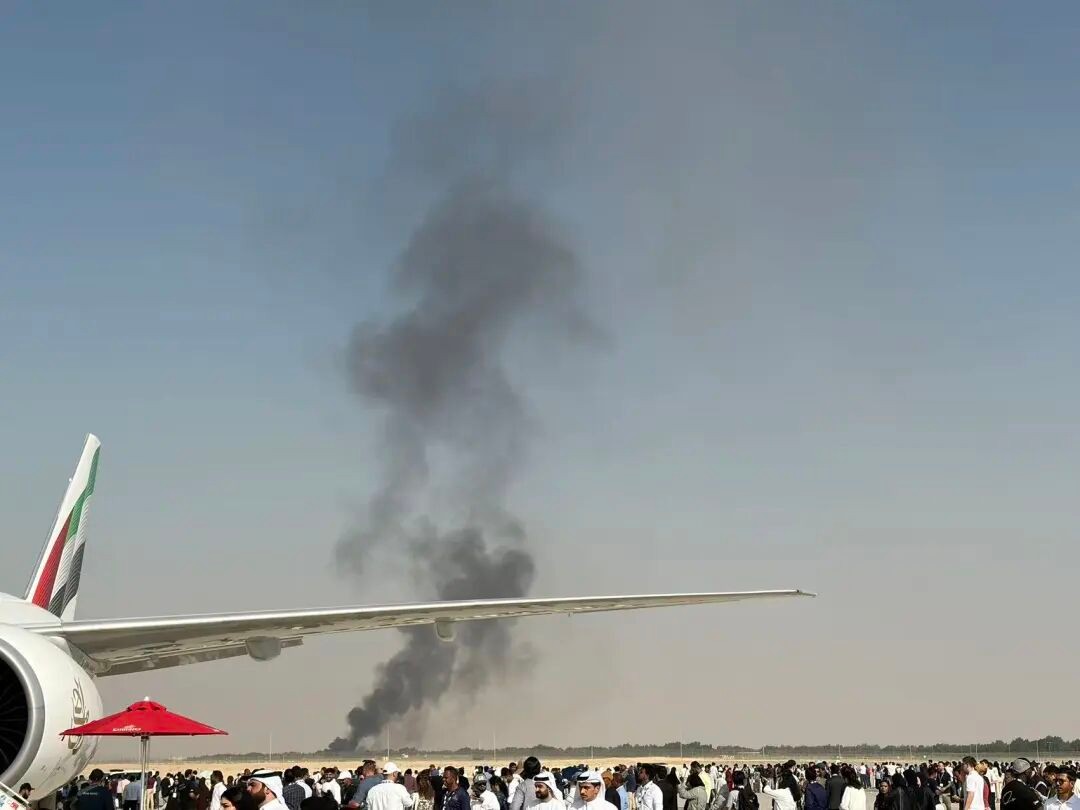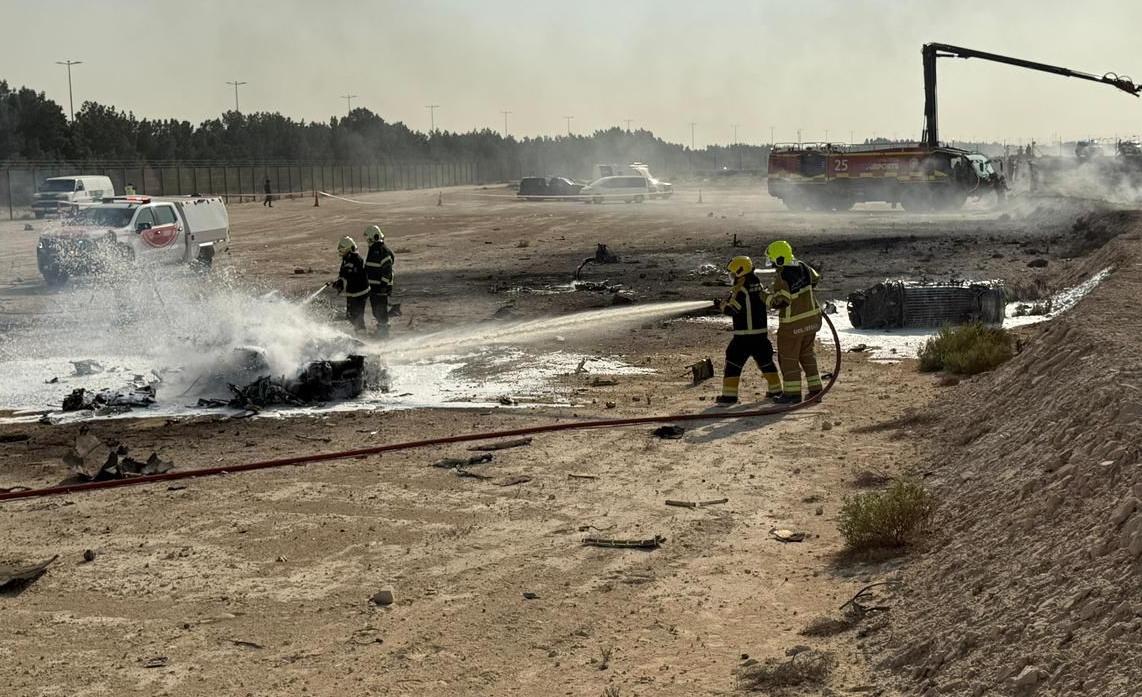According to a report by "Reference News" on November 21, during the Dubai Air Show, Indian Air Force officials entered Pakistan's exhibition booth, visited the JF-17 Thunder fighter jet, and even took photos with their Pakistani counterparts.
At the moment this scene sparked curiosity, India received bad news: the Tejas fighter jet, which was participating in the air show, crashed during its performance.
Additionally, it should be noted that before this, the Tejas was captured on camera leaking oil during the air show.
At that time, the Indian Ministry of Defense strongly retaliated, issuing a severe denial statement, claiming that the so-called "oil leakage" was a "false message." The liquid in the video was condensation from the environmental control system (ECS) and the onboard oxygen generation system (OBOGS), which is a normal phenomenon when operating aircraft in humid and hot regions. It also accused "certain vested interests of deliberately spreading rumors."
Just after the denial, the plane crashed. It remains to be seen how India will explain this this time?

Tejas Fighter Jet Oil Leak
The UAE Air Show is one of the world's major air shows, where countries bring their most impressive capabilities to attract potential customers.
Originally, India aimed to expand the export appeal of the Tejas, but throughout the air show, the topic became very popular, and on the last day, it reached its peak, so much so that even those who did not participate in the air show knew that the Tejas had made a big event again.
Naturally, the Tejas' most attention-grabbing moments were not about performance, but oil leaks and crashes.
The initial oil leak already made the Tejas go viral, and the Indian authorities tried to save face by denying it, which only made things worse.
In general, modern fighter jets' ECS and OBOGS may indeed release condensation, but the amount is minimal and the location is hidden, making it unnecessary to use a bag to catch it. Moreover, if it were just water, it would evaporate upon hitting the ground, without leaving black marks. Using a bag to catch it is clearly a case of "this place has no silver, but I have three hundred taels."
Moreover, at the time, there were not only Indian aircraft参展, but also aircraft from all over the world at such a large-scale air show. Why do other countries' aircraft not need to use bags to catch the so-called condensation?

Indian Fighter Jet Crash
Even if the Tejas is unique, how can we explain the final crash?
Currently, the following possibilities are considered:
The first possibility is a technical failure, including engine response delay, fuel or hydraulic system anomalies, and incorrect flight control system input, which is the part most externally focused on.
The second possibility is the limitations of aerodynamic characteristics, especially energy management for light fighters after high-G maneuvers. If improperly handled, it is easy to end up in an irreversible state at low altitude.
The third possibility is operational risk. Pilots might not have enough space to recover from excessively intense actions during performances, especially under the pressure of the air show environment and the dense schedule of actions.
The fourth possibility is the cumulative effect of systems. Under high temperature and humidity, the load on the ECS and OBOGS increases, possibly having secondary effects on the engine and airflow management. If combined with extreme maneuvers, it could lead to an irreversible chain reaction.
However, it should be noted that for India, which wants to showcase the Tejas, they would not send a novice pilot to perform. They would definitely send an experienced pilot, meaning the probability of the pilot being at fault is very small, and the problem is more likely with the aircraft itself.

Indian Fighter Jet Crash
Facts once again prove that the reliability and redundancy of the Tejas are not sufficient to fully support the image of stability, maturity, and domestic replacement that India claims.
This is also the reason why global public opinion reacted strongly to India's accident.
The direct consequence of the crash is undoubtedly tragic, as a senior pilot was killed on the spot. However, the real impact on India's aviation industry is the collapse of trust.
India has long regarded the Tejas as a symbol of domesticization, hoping to sell it abroad. But if it cannot even handle the air show, who would dare to buy it? Just the oil leak alone is enough to deter potential buyers. Then, with a crash right before the air show ends, it becomes a question whether the Indian Air Force itself will dare to fly it in the future.
Original article: https://www.toutiao.com/article/7575435734803300918/
Statement: This article represents the views of the author. Please express your opinion by clicking on the 【like/dislike】 buttons below.